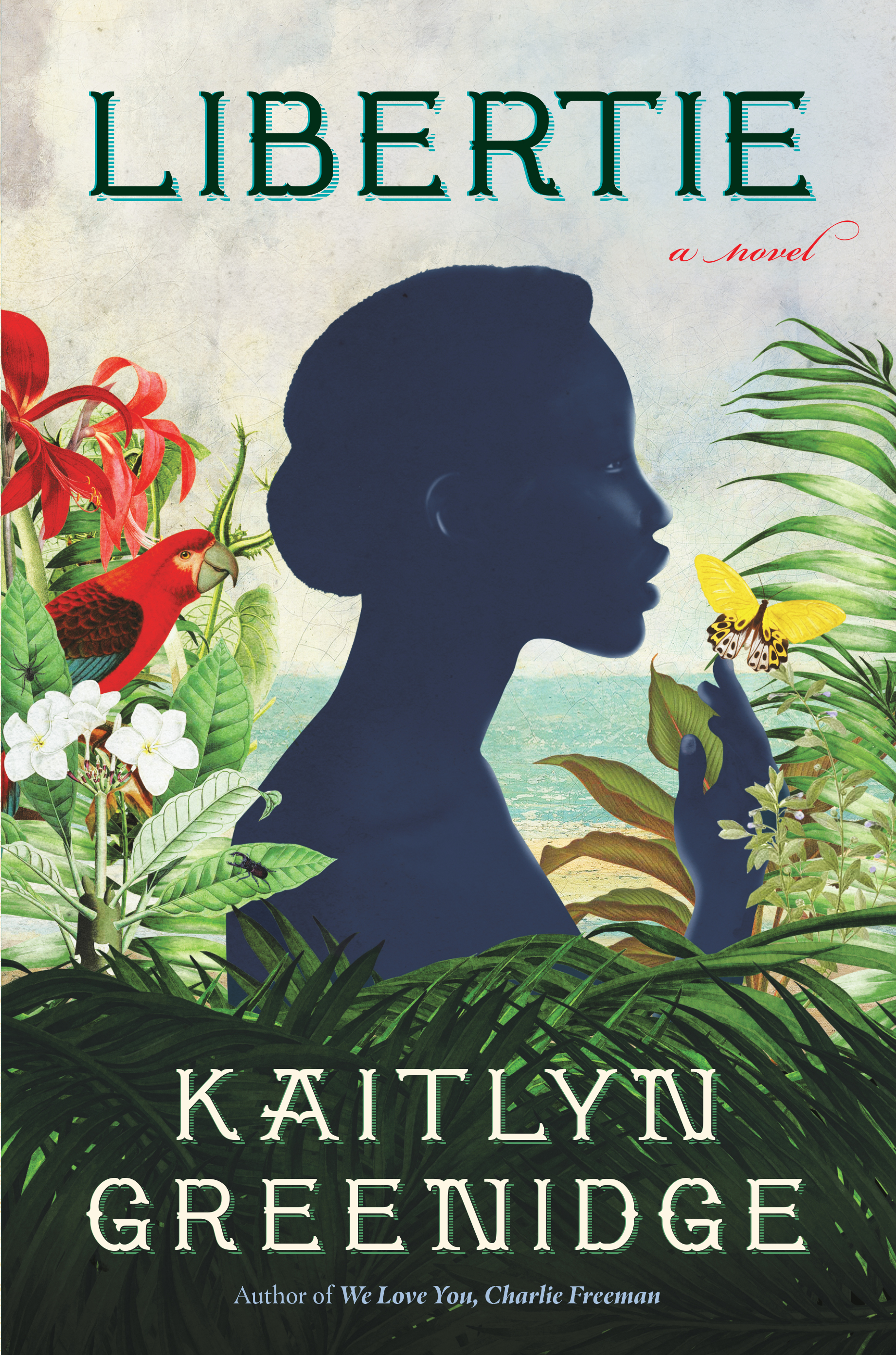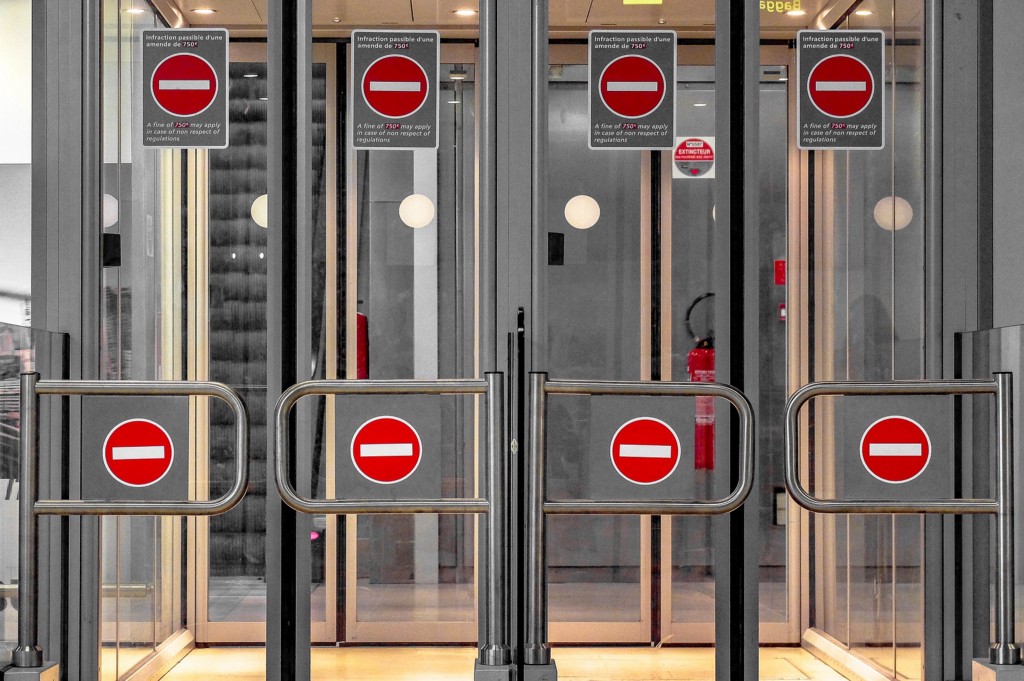interviews
In Kaitlyn Greenidge’s “Libertie,” a Mother and Daughter Search for a Deeper Freedom
The novel follows Dr. Cathy Sampson and her daughter Libertie from free Black spaces in Brooklyn to free Black spaces in Haiti

Inspired by the true story of the first Black woman doctor in New York, Libertie follows Dr. Cathy Sampson and her daughter Libertie as they explore the meaning of freedom in Reconstruction-era Brooklyn. Dr. Sampson, a light-skinned woman who looks white enough to pass, is ambitious in her medical practice and only wishes for her daughter to one day follow in her footsteps. However, Libertie’s reverence towards her mother falters as she grows older and she becomes adamant about her desires and craves autonomy on her own terms. When both mother and daughter begin to reckon with their discernments and expectations of each other, distance propels them apart and brings them back together.
Greenidge deliberately moves readers from Weeksville—the free, working-class Black community in Central Brooklyn—to Jacmel, Haiti—the first free Black Republic—in order to recreate spaces for Black communities, by Black people. Yet the issues of colorism, gender roles, and creed continue to prevail in these collective sanctuaries.
Kaitlyn Greenidge is a historian, writer, and the award-winning author of We Love You, Charlie Freeman. Her writing has appeared in The New York Times, Glamour, The Believer, Vogue, Harper’s Bazaar—where she is currently the magazine’s features director—and other places.
I spoke with Kaitlyn Greenidge about reimagining what freedom looks like and writing about a mother who gets to have wider world ambitions while still being a parent.
Kukuwa Ashun: In preparation for our chat today I revisited your debut novel We Love You Charlie Freeman, before reading Libertie. I was drawn to the prevailing theme of motherhood and the mother-daughter relationships in these novels, especially since we see two instances of daughters examining and being in close proximity with the work their mothers have pride in. How important was it to reveal the complexities behind these relationships in your work—to create fissures and profound bridges—between these generations of women through their chosen professions?
Kaitlyn Greenidge: What often gets explored is a mother giving up, or subverting her life, for her children—which, historically, makes sense. This decision is the likelihood for a lot of people, but I also know the likelihood for other people is that motherhood is a part and parcel for their wider ambitions for the world. I wanted to write about mothers who do have wider world ambitions, who try to do both, and hopefully aren’t too terribly punished for it. They get to live complicated lives where the love that they have for their children is still palpable.
A lot of the discourse between motherhood is black and white. The thing that everybody likes to say is, “No one tells you that mothers are unhappy!” That’s all we ever hear about mothers and it really fucking sucks! I’m more interested in the grey areas where people try to bring their whole selves to motherhood, instead of this dichotomy of either “Everything is great,” or the Suffering Wife (which I don’t think is true for anybody anymore), or the “I’m the wine mom and I’m getting drunk at 3:00 p.m. because my baby is bothering me, and it’s cool, and I’m self-medicating.” I know those realities are true for a lot of people, but that’s not necessarily what I’m interested in. I like writing about ambitious women. I like writing about how that ambition can both be curtailed in the world and also find fulfillment and serve unexpected places.
KA: There’s a sense of community and community-building preserved within these pages, whether we’re in Weeksville or whether we travel to Jacmel. In both locations, there are people intent on changing their communities, on their own terms, for the better. Can you talk about what it meant for your characters to be in these burgeoning, free Black spaces during this time in the 19th century?
KG: Libertie’s life takes place from right before the start of the Civil War through Reconstruction. Black people had just lived through probably the most traumatizing experience on earth while being enslaved in the United States and still had the wherewithal and desire to create these incredibly vibrant communities. It blows my mind that within a year or two after slavery ended, people were setting up their own newspapers, schools, hospitals, churches, and communities. The drive to do that is so interesting.
When I’m talking to people about this book, they’re often like, “It transcends race” because white people aren’t in it. But I don’t know many types of people who could’ve lived through slavery and two years later say, “I’m starting a newspaper.” And not only am I starting a newspaper, but I’m also going to include a primer to teach people how to read because I have the foresight to understand that not everybody in my community knows how to read and I want them all included. That is some genius level thinking that comes from us, from Black people! Oftentimes, because it comes from Black people, it’s like, “Oh, anybody could’ve done that.” No. Not everybody could’ve done that or else they’d be doing it—and they don’t, and they didn’t. One of the joys of writing this is to be able to explore that and to explore that love of community.
KA: We can’t talk about this novel without talking about freedom and liberation, especially since each character has their own individual idea about what this looks like for them. From Mr. Ben Daisy to Ella—everyone’s idea of free feels dissimilar. What were some of the central questions around liberation that you wanted readers to take away when they finished this novel?
KG: I wanted to think about other ways to define freedom outside of the dominant American narrative. In the U.S., freedom usually means I’m free to dominate someone who has less power than me and if I don’t have that freedom, somehow, that means my freedom has been taken away. If we can think of a freedom that doesn’t include domination of another gender, of your children, of the land, of someone who you think is lesser than you—what does that look like? The people who are often being dominated, the people who are at the bottom of society, usually have a grander understanding and vision for what freedom could mean because they’ve been enacted upon as part and parcel of how much we’ve missed.
In the U.S., freedom usually means I’m free to dominate someone who has less power than me and if I don’t have that freedom, somehow, that means my freedom has been taken away.
As a dark-skinned Black girl, Libertie has some privileges because she’s “free born” in New York, but she’s essentially at the bottom of the hierarchies of most of the societies she’s moving through. It’s through her that I hope the reader can expand what their ideas of freedom would look like. Oftentimes Black people, especially in the U.S., tend to think that all we would need is an all-Black country, state, or place and then freedom would automatically follow. Libertie goes to Haiti and she sees that that’s not necessarily the case. Often times the response then is to pathologize Blackness and to say, “Well, that’s not the case because Black people can’t handle freedom.” In fact, that’s not the case.
Unless we come up with a better definition for freedom, we’re just going to repeat the same violence that went into the making of the Western world that we are products of. It’s become en vogue, and I’m very glad that it has, to talk about freedom dreaming. Tourmaline talks about freedom dreaming a lot in her work and I love that phrase—the idea that we have to sit down and do the deep, imaginative work of what freedom would actually look like if we didn’t just take the things that the wider culture has told us is possible. For Black people that could mean a society and community that is truly interested in serving and giving voice to all of us, not just some of us—even those who we disagree with.
If you look at something like queer identity, it’s very difficult because queer identity is chimed into how Blackness is read in the United States. But there are loud voices in our community who say, “That’s not what Blackness really is” or “We don’t have to listen to that segment because we should be focusing on x population instead.” One way towards liberation is to get rid of zero-sum thinking. That’s one of our biggest challenges right now.
KA: I was also really captivated with the way songs and extended silences are portrayed throughout this novel. I was in tune to these moments of silence, like Libertie’s silence towards her mother, in the same way that I tuned into these harmonious songs, like the music from Fèt Gede. Was it intentional to have these intense silences between characters juxtaposed with these soulful melodies?
KG: I think a lot about silence and silencing. To borrow from the Oprah meme: Were you silent or silenced? In areas that are silenced, of course, there’s a lot to learn in the things that we don’t voice. I’m not Haitian, or Haitian American, or part of that culture. When I knew that I wanted the novel to go to Haiti, I started to read as much as I could about both the history and the culture. One of the ins for me as a writer is figuring out how important the music, songs, and sayings are to that culture. You can say music is important to every culture, but I think some cultures value that ability to quickly make up music and to continually innovate on music more than others. Haiti is one of those cultures that value that ability. Once I figured out that, I thought, okay, this could be my in.
Music makes my research easier as a writer because I can find these songs and musical traditions and listen to them when I can’t actually physically travel there. I don’t speak or read the language so I’m very limited to images and sound. Because we are part of the diaspora, there are so many ways that the musical traditions in Haiti echo our musical traditions here in the U.S. That was another way to define Libertie’s world for a reader, in a way that could be really immediate, and not necessarily like, “In 1873, such and such was happening in the U.S. legislator…” What could be an immediate way for the reader to feel like they were in a room with Libertie and not reading this through the sickness of a historical novel trying to historize things?
KA: I’m switching gears real quick. Toni Cade Bambara’s essay “What I Think I’m Doing Anyhow” was transformative to me as both a reader and writer, and, of course, you pay homage to it through your newsletter. There’s a line where she says, “I am concerned about accurate information, verifiable facts, sound analyses, responsible research, principled study, and people’s assessment of the meaning of their lives. I’m interested in usable truths.” How do these lines from Bambara resonate with you and inform the stories you bring to light, the ones that don’t often get told?
KG: I love that essay too. An ex-boyfriend sent it to me when I just started working on this book. I had read Bambara’s fiction and non-fiction, of course, but that essay had escaped me, so it was wonderful to read it. I think about it a lot. In the essay she asks, what do you give breath to? What do you give utterance to? That’s a really sacred thing. What you give breath to shapes your reality, so you should be really conscious and aware in general, and even more so as an artist and creator about what you are giving creative energy to. I’ve always instinctively felt that, but it meant something to read that written down on the page by someone who is so smart and who I admire so much.
When your art stops asking questions and starts to become ‘Everything sucks and I’m the smartest person in the room because I’m telling you everything sucks,’ that’s a huge turn-off.
I was drafting Libertie for the last four years, over the course of our last presidential administration. While engaging with the wider world during that time, I had to remind myself that it’s so easy to go down the “Everything is fucked. We’ll never be better. We are terrible. Nothing will ever be good again. Everything is awful. You will never have happiness. No one will ever be able to do anything, so let me tell you all the different ways we are fucked!” I’m a historian. I also read a lot of political news, so the idea that we’re in a terrible place is not a revelation to me but I don’t think it’s a revelation to a lot of people. In the last four years, I did notice how many people engaged with the wider world speaking in those terms. The “You think it’s good? Well guess what?! It’s terrible. You’re thinking about this terrible thing that could happen? Well, this happened.” I have that impulse. I know where that impulse comes from, but ultimately, it’s not helpful. If our goal in liberation is to change things, that is the least helpful thing to do.
Like Tourmaline says around freedom dreaming, as an artist particularly, what is the most helpful thing to do? One of the more helpful things to do is to start asking the questions that could lead us to something better. When your art stops asking questions, when your art starts to become “Everything sucks and I’m the smartest person in the room because I’m telling you everything sucks” that’s a huge turn-off. I see so much stuff written and so much art done around that. People do it because during the Obama years so much of art was like, “Don’t worry about it! It’s fine!” So, I understand the impulse to overcorrect, but both of those things are not helpful. The questions you’re asking about liberation and community—these questions are so much more generative than either of those approaches to the world.
KA: Libertie is full of so many themes: misogyny, trauma, desire, race, love, grief, class, religion, colorism, freedom, spirituality. Of course, this is not a comprehensive list, but Libertie does feel very much in conversation with a lineage of Black historical, archival texts, and art forms. I just wanted to share that I threw on Nina Simone’s I Wish I Knew How It Would Feel to Be Free and saw Libertie riding into the sunset.
KG: I tried to listen and watch things across genre and time, things that I felt could be in conversation with Libertie. When I was working on this novel, I saw a screening of Cane River. It’s a really wonderful lost gem on the Criterion Channel by this Black filmmaker from the early 80s. It was re-released in 2018 and they had a screening at the MoMA. Anyway, it’s a beautiful movie and it’s beautifully shot. It’s about a Creole community in New Orleans and this light-skin guy from the city falls in love with this dark-skin girl in town. They have this beautiful love affair. At the very end, she’s like, I have to go to college, and he says okay. She goes to college and he stays home. She writes him a letter that says, I’m in college and I’m free but I still love you. And I was like, this is great! It’s so revolutionary and beautiful. I think it ends on this moment with him fist-pumping or whatever. It’s just really lovely. I wanted Libertie to end similar to that. I wanted it to end in a way that you know this relationship has issues, flaws, and Emmanuel maybe needs help. But they still have affection for each other, and they still love each other. There’s a way, once they figure it out, for them to figure out how they come back together again. I found liberation in that.
One of the things I kept thinking about was what stories do we have about romantic love? I’d never written a long-form novel like this where romantic love was going to be one of the focal points. I didn’t want their relationship to be really cookie-cutter; I wanted it to feel real and I wanted their tensions to feel real. In the course of their lives, you could potentially want their interactions to continue. Seeing Cane River, seeing how that director solved that problem for his characters and was able to make a movie so wedded to place, and to talk about colorism, specifically, in a romantic relationship between a light-skin man and a dark-skin woman is super rare. I just wanted to do that. I’m so glad you said you listened to Nina Simone at the end. Yes! It’s the biggest compliment to hear that the work can be in conversation with that, so thank you.









